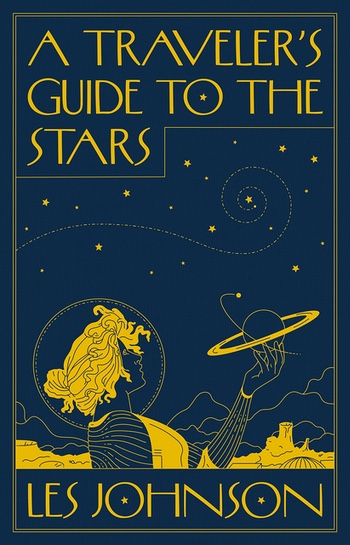Review: A Traveler’s Guide to the Starsby Jeff Foust
|
| “Crossing the vast distances from Earth to the stars will require revolutionary advancements in spacecraft propulsion,” he writes. |
Johnson uses the book to make the case that interstellar travel can be done, even though it will be exceptionally difficult. While he offers some discussion of where to go, thanks to explosion of exoplanet discoveries, and why to go there, the heart of the book is on technology: how to get there. Conventional chemical propulsion is off the table, so he examines the various alternatives, like fission, fusion, and antimatter. He also explores different types of sails, including the laser-propelled lightsails being studied by the Breakthrough Starshot project.
The news isn’t terribly encouraging. Johnson estimates that, for a vehicle designed to travel at 10% the speed of light, the minimum acceptable specific impulse—a measure of the efficiency of the propulsion system—is 400,000 seconds, about 1,000 times higher than the best chemical rocket engines. Most other alternatives also fall short of this threshold, with only sails and some antimatter and continuous fusion systems exceeding it. However, those systems offer only small accelerations. “Crossing the vast distances from Earth to the stars will require revolutionary advancements in spacecraft propulsion,” he writes.
Yet, he is undeterred by that challenge, devoting one chapter to other design issues of interstellar vehicles, from communications and navigation to life support for crewed spacecraft, all on the assumption that the propulsion problem is solved, somehow. He embraces the challenge: “if we are to go to the stars, then we need to think BIG,” he writes, grappling with enormous distances and energies, as well as schedules and costs.
It's unclear that the reader will come away with the same enthusiasm for interstellar travel. Instead, the magnitude of the challenge may simply seem too daunting for our current level of technology, like asking the Montgolfier brothers to build an SR-71. One must start somewhere, proponents will argue, but without near-term milestones, sustaining long-term progress will be difficult. A decade ago, for example, there was considerable enthusiasm around the 100-Year Starship initiative, seeded with DARPA funding, to study issues associated with interstellar travel with a century-long time horizon. But that project has faded: the last press release on its website was posted five years ago (although it is holding a “100 Year Starship Annual Marquee Public Happening” in Nairobi next year, so perhaps the organization was simply testing suspended animation technology for interstellar travel.)
Efforts like solar sails might be one way to achieve that near-term progress to sustain work on longer-term interstellar projects, but even that is not simple. Johnson noted at the smallsat conference in August that NEA Scout was intended to be a technology precursor for Solar Cruiser, a heliophysics mission that would have used a larger sail to maneuver around the Earth-Sun L1 point. However, NASA declined to confirm that mission for development, citing technical problems with the spacecraft. And NEA Scout itself remains on the SLS, waiting for a launch now delayed to at least mid-November. When getting off the planet remains difficult, it’s hard to focus on getting out of the solar system.
Note: we are using a new commenting system, which may require you to create a new account.
